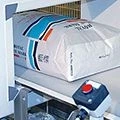When it comes to the safety of products in use, we engage our potential in defining solutions to them. A quality product builds a safe surrounding to live in, quality food, buildings, infrastructure, transport, and other services. When it comes to pack and store food grains or building materials, it is reflected that there must exist a safe packing procedure to deliver the packed products as desired at their destination.
Here comes the role of packaging bags; hence valve bags are introduced. For a general understanding, valve bags are packaging bags filled by automated or semi-automated machines. These bags are capable enough to store bulk material as well as chemicals. Different types of sectors of the economy require different varieties for creating products and services through raw materials. Some of the questions regarding valve bags may be: working, performance, speed, benefits of automated ones over manual systems, what all can be filled and stored in valve bags.
Manual vs. automatic valve bag machineWith the development in technology, companies have replaced manual systems and switched to automatic or semi-automatic systems. The work process is similar, but the targets differ due to the higher accuracy and speed of the robotics system. Bag size is adjusted according to the material filled. In a manual valve bag packing machine, the bags are fit to the nozzle. The filling starts, whereas an automated machine shifts the filled and packed bag forward and introduces the new bag into the line; the fundamental difference observed between the two.
Benefits of valve bags
With a broader view to build production skills and obtain quality output from the input given, the main focus remains on the design of the equipment which can give the desired output. Valve bags are filled with specialized machines.
Engineers and experts plan the procedure and execute it according to the quantity of material—proper planning and execution help ensure consistency in the filing and minimal or no loss of product. The more the valve bag packing machine fills bags per minute, the more the orders are fulfilled that make a higher profit. This way, the company benefits from paying the machines\' price that may be manual, automatic, semi-automatic, and invests in other machines to increase production.
Two types of such storage options available in valve bags are:
- Paper valve bags
- Polyethylene valve bags
Valve bags are suitable for storing food grains or powders like coffee powder, protein powder, milk powder, cement, flowing liquids, semi-solid materials. Also, granulates, building raw materials, concrete, powdery bulk, chemicals, minerals, and many more. Valve bags provide a protection layer to the packed materials with a safety coating both inside and outside for protection from unwanted damages due to moisture, insects, etc. Sizes vary from product to product according to the fluidity and their shapes.
Sometimes, the valve may not get sealed; look towards the proper ventilation of the bag in that case. It is equally essential to deliver the weight as promised. Therefore, it is necessary to check the bulk density of the material and check the airflow and expel all the unnecessary air out of the bag to avoid quantitative obstructions.
Concluding measuresThe packing solutions differ according to the needs, size, sealing, material, and types of valve bags. For instance, polyethylene valve bags are easily stretchable and do not break. Polypropylene-made bags have excellent properties to retain their shape even when fully loaded, and paper valve bags are tear-resistant due to several layers of coatings over them. Hence, numerous varieties assist the packaging system and are manufactured on a valve bag packing machine.



